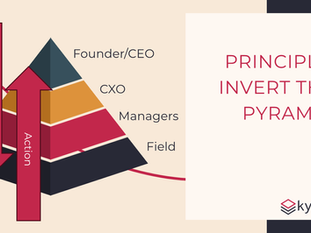
This post was hosted by a company I'm partnering with: Scopic. Their blog post is linked here.

In this blog post I’ll attempt to cover some of the nuances in using AI in a contact center (CC) environment. Contact centers are the ever increasingly default touchpoint between organizations and their customers. Due to their reliance on people to serve customers, even if remotely, CCs are often viewed as cost centers with expenses heavily scrutinized. Using AI in the contact center isn’t new, but the recent advances in developing AI solutions using large language models (LLMs) has changed what’s possible and how it’s done. Classic AI solutions have been improved, and a new generation of generative AI (genAI) solutions has introduced whole new use cases. Are they magical silver bullets to solve all challenges? Not yet. But there’s enough new and interesting to warrant a revisit.
Before delving into some use cases, it’s important to note that the more automation is introduced into a CC operation, the more the performance metrics need to be tweaked to match the new environment. As the more mundane issues get automated out, agents will naturally start receiving the more complicated issues, which will generally take longer to resolve and might need multiple touch points. Traditional contact center metrics of average handing time (AHT), cost per call (CPC) should be de-emphasized and replaced with more meaningful customer satisfaction metrics such as first call resolution (FCR) and net promoter score (NPS).
So what areas of the contact center could benefit from AI?
Agent Assistance
The highest cost in a CC is the human one, so any efficiencies there have the best ROI. The first step of interaction between customers and an organization these days is usually chat. It might be tempting to give genAI chatbots free reign to serve customers in that channel, but the risks with current gen are too high (hallucination, misunderstood intention, malicious users). Instead of going full genAI automation, chatbot vendors have started introducing genAI elements into their classic AI solutions, making them sound more human and responsive. They’re better at knowing at customer intent, they serve more comprehensive answers, and when they can’t solve a problem, know when to hand over to an agent. Note that this automation can be done for chat and voice calls, but in my experience the accuracy and responsiveness of voicebots is not ready for wide deployment.
After that handover happens, chatbots can stay “on the call” to continue providing real-time assistance: both in terms of a soft handover to the agent (for example, offering a summary of the chat and potential resolutions), and staying on to assist the agent with responses and tools in real time. These bots will surface relevant data to the live agent, provide unique pre-built responses, and even provide feedback to the agent. A chatbot will also assist with after-call work: summarizing the call, customer issue, and resolution, and displaying that information so the human agent will only need to review the summary and save it.
A note about voice-bots: I’ve seen several vendors promise good voice-bots for customer service, but I’ve only seen limited successful deployments. Issues with cost, accuracy (especially with accents and dialects), customer frustration, and length of deployment have made them niche offerings. However, things are developing quickly in that space so this paragraph might not be accurate in the coming months.
Agent Onboarding & Training
One of the challenges in contact centers is on-boarding new agents and having supervisors shadow them for their first few calls. Whether to train new agents or retrain current ones on new products, there are now genAI-based solutions that will allow you to create a persona that agents can train with: happy customer, irate customer, etc., and allow agents to practice through either with chat or voice. These tools will provide summaries on how well an agent does and suggest actions to improve. And because these use cases are internal, a full genAI chatbot can be used, freeing up supervisors and team leaders.
Analytics
CCs generate a lot of data: call metrics, call recordings, agent performance, etc. The challenge with that data is the quantity: generating reports is a complicated process, and except for a small percentage, most recorded calls are not reviewed at all. The most recent advances in applying GPTs to large quantities of data has opened a whole new world of possibilities.
First, analyzing chats and ACW notes from agents. This will help contact center managers uncover trends and sentiment: how well are customers liking a certain product? What’s the most common complaint about another one? What’s a feature everyone is asking about? What’s a competitor doing? These can all be summarized by training an LLM on the CC’s data. Second, analyzing call recording: this is a bit more computationally demanding but is a natural extension of the analyzing text. Similar insights can be had, but these can also analyze agent calls: how did they perform, where can they improve, where do they need additional training. Third, analyzing statistical data using human language: what’s our call trend, where can we improve, can you compare these numbers to last week’s, etc. This offloads some of the demands of the analytics team, allowing them to spend less time generating reports and more time analyzing and making decisions.
Adopting AI Tools
A common question posed by many companies is: with the apparently limitless possibilities of AI, where do we start? I’m providing a rough guide here to help generate some ideas.
Start with the most pressing problems: every CC has its challenges, and some will be higher on the radar than others. It might be tempting to solve the easier problems first, but the time and effort put into an AI project will be similar regardless of the problem being solved, thus a higher ROI will be achieved with the more complicated problems.
Get comfortable with an experimentation mindset: some classic AI solutions are proven, but the outcomes of more modern genAI-infused solutions are still being defined. Vendors are rushing to introduce genAI into their solutions, but the use cases are still niche and don’t have clear ROI. When experimenting with genAI solutions, it’s better to start small (subset of users, subset of customers, subset of data, etc.), define a narrow scope of project, including success criteria, and be comfortable with declaring failure if things don’t work. It’s better to succeed in 1 of 5 smaller experiments than force one l project through. A large project shouldn’t be attempted unless there was a successful smaller scale experiment.
Beware the vaporware: vendors have different levels of maturity when it comes to genAI adoption and expertise. When dealing with vendors, adopt a “benefit of the doubt” approach. After the marketechture presentations, insist on live demos and use cases that apply to your organization. Instead of going full project deployment, use a proof of concept (POC) or pilot approach, keeping the scope and investment to a minimum. Define success criteria clearly and insist and involvement by the vendor throughout.
Engage the right partnerships: the genAI wave is only two years old, so anyone insisting that they’re “experts” in genAI is being optimistic. That shouldn’t mean everything needs to be done in-house – many companies that have been doing the behind-the-scenes work around building AI solutions for years, and thus will have experience in AI in general. Ask for specific examples of projects or deployments, seek detailed explanations for how that partner would address a specific problem, look for lessons learned or other indications of experience.
Watch for unintended consequences: you might successfully solve one problem and create another. In the CC space, resolving the smaller requests via chatbots will make the typical problems live agents handle more complicated, thus increasing their handling time. Making generating reports easier might lead to too many reports, overwhelming the BI team.
Involve governance, at the right time: genAI solutions are somewhat of a black box in terms of how they work. They have built-in biases, assumptions, understandings, and definitions that have been tweaked by their developers. Many genAI solutions involve uploading user data for model training and improvement. Many insist on connecting over the internet to a cloud provider. All these variables are things worth considering and assessing before rolling out full projects, but trying to resolve them all before experimenting is not practical. Engaging the governance team at the right time is important.
This is a taste of what’s possible. The genAI market is developing rapidly, and instead of focusing on specific solutions, the approach of experimenting with genAI is what companies should focus on.






